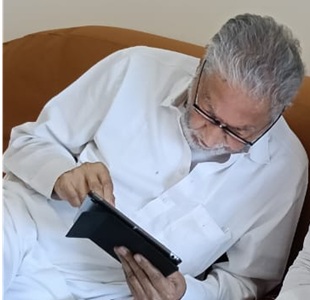Along with philosophers, tax lawyers and computer programmers, scientists are perceived as speaking in a language which is supposedly the same as that of common people, but scarcely intelligible to them. And then they use strange symbols, complicated equations, and considerable jargon to talk of “things” unlikely to affect an average person’s life or to be even seen without specialised equipment.
So can scientific writing in any way be even comparable to literature? Yes, for scientists, across various disciplines, are also dealing with the mysteries of life, the universe and everything else, and can express themselves on their subject in ways the most lyrical poet, the most imaginative novelist or the most incisive historian could well envy.
Be it those trying to discern the cosmos’ origin, matter’s structure, the bewildering development and processes of life, including by evolution (despite what some Indian ministers may think), the abundant marvels of nature (including, but beyond humans too), and so on, scientists have written about their work and findings in absorbing ways.
And in this, they have more to teach us about ourselves, our past and future, than any preacher, politician or philosopher ever could.
Let us take a selection from the last century, which was full of developments across all spheres of science. And since our existence in terms of our position in the world and the universe is key, we can start with an English physicist, astronomer and mathematician placing things in perspective.
“… we attempt to discover the nature and purpose of the universe which surrounds our home in time and space. Our first impression is something akin to terror. We find the universe terrifying because of its vast meaningless distances, terrifying because of its inconceivably long vistas of time which dwarf human history to the twinkling of an eye, terrifying because of our extreme loneliness, and because of the material insignificance of our home in space — a millionth part of a grain of sand out of all the sea-sand in the world. But above all else, we find the universe terrifying because it appears to be indifferent to life like our own; emotion, ambition and achievement, art and religion seem equally foreign to its plan,” wrote Sir James Hopwood Jeans (1877-1946) in “The Mysterious Universe” (1930).
Then, coming to humans, we cannot ignore evolution — and the contribution of Charles Darwin. Among the best to explain its significance is Helena Cronin (b. 1942), a philosopher of biology and co-director of the Centre for Philosophy of Natural and Social Science and the Darwin Centre at the London School of Economics.
“We are all walking archives of ancestral wisdom. Our bodies and minds are live monuments to our forebears’ rare successes. This Darwin has taught us. The human eye, our brain, our instincts, are legacies of natural selection’s victories, embodiments of the cumulative experience of the past,” she says in the beginning of her “The Ant and the Peacock: Altruism and Sexual Selection from Darwin to Today” (1991), on one of science’s “foremost achievements” — the Darwinian theory.
Then there are those unravellers of life’s basic building block — DNA structure discoverers James Watson and Francis Crick.
About the moment of discovery, Crick, in his autobiography “What Mad Pursuit” (1988), says his research partner remembers he went into the pub across the road where they lunched daily and told everyone they had discovered the secret of life. “Of that I have no recollection, but I do recall going home and telling (wife) Odile that we seemed to have made a big discovery. Years later she told me that she hadn’t believed a word of it. ‘You were always coming home and saying things like that,’, she said, ‘so naturally I thought nothing of it’…”
Watson, after his “The Double Helix” (1968), followed up with “Avoid Boring People” (2007), which has each chapter ending with lessons such as “Never Be The Brightest Person In A Room”, “Avoid Gatherings Of More Two Nobel Prize Winners”, but also “Work On Sundays”, and “Put Lots Of Spin On Balls”.
Switching to the physical world, we cannot ignore possibly the 20th century’s most well-recognised scientist — Albert Einstein. Let’s take his insightful essay, “Religion and Science”, in which he eloquently pleads the case for new, better form of religious experience which will give rise to a new relation between these two.
After discussing the need-based and the social impulse-based variants which have in common “the anthropomorphic character of their conception of God” and which is only surmounted by “individuals of exceptional endowment”, he comes to a third — “cosmic religious feeling”, which, according to Einstein, “is the strongest and noblest motive for scientific research”.
For “only those who realise the immense efforts and, above all, the devotion without which pioneer work in theoretical science cannot be achieved are able to grasp the strength of emotion out of which alone such work, remote as it is from the immediate realities of life, can issue…”.
Can there be any better exposition of science’s purpose?
(Vikas Datta is an Associate Editor at IANS. The views expressed are personal. He can be contacted at vikas.d@ians.in)
—IANS






0 Comments